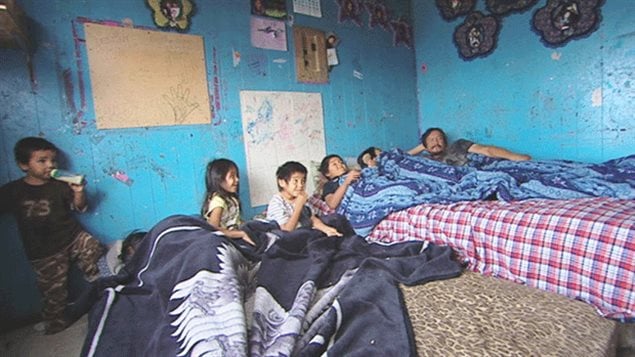As Prime Minister Justin Trudeau’s Liberal government grapples with plans to help lift Canada’s indigenous peoples out of poverty, a new study paints a bleak picture of the mountain to be climbed.
Findings released today by the Canadian Centre for Policy Alternatives, a non-partisan research institute, suggest that indigenous children in Canada are more than twice as likely to live in poverty as non-aboriginal children.
Calling the poverty rates “deplorable,” senior economist David Macdonald, the report’s co-author, says that despite strong economic growth in the 2000s in Alberta, Saskatchewan and Manitoba, “we are not seeing that filter down to the on-reserve level.”
The report documents dire living conditions of status First Nations children, including 60 per cent living on reserves.
It says poverty rates are highest for First Nations children on reserves in Manitoba (76 per cent) and Saskatchewan (69 per cent).
The study cites underfunded schools and child welfare services as barriers hampering First Nations children from achieving their full potential.
The study issues a number of suggestions to meet the problems. They include improving direct income support and bolstering employment prospects.
The Liberal budget tabled in March announced substantial investments in housing, clean water and education for First Nations, but the study says the bulk of that money is not scheduled to be spent for several years.







For reasons beyond our control, and for an undetermined period of time, our comment section is now closed. However, our social networks remain open to your contributions.